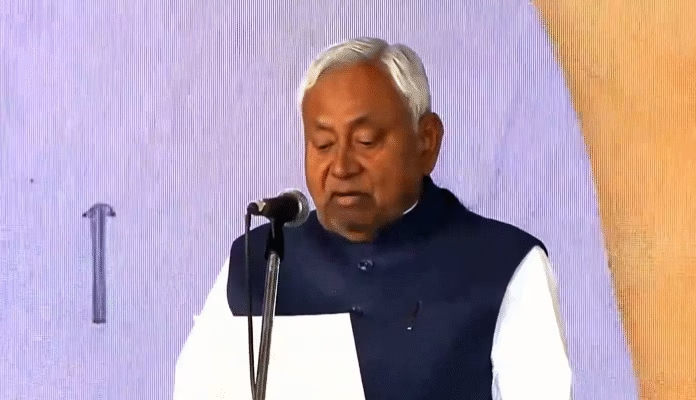
 by Swadesh Kumar
by Swadesh Kumar
Lucknow: The sweeping mandate in the Bihar Assembly elections has reshaped not only the politics of that state but also the evolving power dynamics in Uttar Pradesh (UP). The NDA’s historic performance — crossing the 200-seat mark in a 243-member House — has energized the BJP and sent a clear political signal across the Hindi belt.
For the first time, the BJP emerged as the single-largest party in Bihar. From 74 seats in the previous election, its tally surged to nearly 90 (wins and leads), while the JDU also delivered strongly with around 85 seats. In contrast, the Mahagathbandhan suffered a steep downfall: the RJD slid to about 25 seats and the Congress crashed to just six. This result has altered the political narrative in a significant way.
UP Leaders’ Strong Presence in Bihar Campaign
Behind the NDA’s victory lay not only organizational strength but also influential contributions from Uttar Pradesh’s leadership. Deputy Chief Minister Keshav Prasad Maurya, appointed co-in-charge of the Bihar elections, crafted strategies for 78 seats with Muzaffarpur as the focal point. His OBC outreach played a crucial role on the ground. The strategy he developed alongside Union Minister Dharmendra Pradhan produced visible gains.
Several UP ministers — Brajesh Pathak, Mahendra Singh, Anil Rajbhar, Daya Shankar Singh, Suresh Rana, Dinesh Pratap Singh among others — spent months working village-to-village, booth-to-booth. Their efforts went beyond rally mobilisation; they were core to boosting the NDA’s vote share.
Yogi Adityanath’s Campaign Impact
Chief Minister Yogi Adityanath’s presence proved equally decisive. He held 32 rallies and one major roadshow. Of the 43 seats he campaigned for, most went to the NDA. His projection of law and order, security and development made a strong emotional connect with Bihar’s voters. His name and governance model were effectively used as political messaging — and the results validated this strategy.
How Bihar’s Mandate Will Shape UP’s Road to 2027
The Bihar victory is expected to significantly influence political equations in Uttar Pradesh. Although the 2027 Assembly polls seem distant, the BJP has already initiated internal preparations. Discussions on organisational restructuring, cabinet rejigs and balancing regional equations have picked up pace.
The BJP’s central leadership is closely reviewing the “Bihar model” — particularly its caste management combined with development messaging — with an eye on replicating it in UP. After the 2024 setback, the party views the 2027 election as a matter of both power and prestige.
Allies Under Pressure
The huge NDA win has also forced a rethink among allies. The Suheldev Bharatiya Samaj Party, which once talked of contesting 153 seats, ended up with only 32 and lost most, even forfeiting deposits. This has sent a message that strong-arm tactics used by regional allies to pressure the BJP may not work anymore. The Bihar verdict reaffirms that the BJP is capable of delivering victories even with limited dependence on partners.
A Message for Samajwadi Party
The Bihar outcome also carries lessons for the Samajwadi Party. Although the SP did not contest, Akhilesh Yadav addressed 22 rallies for the INDIA bloc. The results underline that relying solely on the traditional MY (Muslim-Yadav) equation will no longer suffice. Senior SP leaders privately concede that the 2027 contest will require expansion into non-Yadav OBCs, non-Jatav Dalits and emerging rural social groups. Development and broader social alliances, not narrow caste arithmetic, will shape the next battle.
Akhilesh Yadav has meanwhile alleged manipulation in Bihar under the SIR process and claimed such tactics will not be allowed in West Bengal, Tamil Nadu or UP. The SP says its “PPTV” (PDA Prahari) teams will monitor all booths to check irregularities. The BJP has strongly hit back: Deputy CM Keshav Prasad Maurya said those habituated to losing are now questioning the mandate, adding that UP will witness another sweeping win like 2017.
BJP’s First Chapter of Its 2027 Strategy
For the BJP, Bihar’s 200-plus wave is more than an electoral win; it is the opening chapter of its Uttar Pradesh strategy. The verdict reflects a public preference for good governance over “jungle raj”, dynastic politics and caste-based mobilization. The party now aims to carry this sentiment into UP with a mix of organizational strength, caste recalibration and development-focused politics.
For the opposition, the Bihar result is a wake-up call: old templates will no longer work. Political equations are shifting rapidly, and the path to the 2027 UP election is set to be more dynamic, challenging and unpredictable. What is certain, however, is that the ripple effect of Bihar’s mandate will be felt strongly in Uttar Pradesh in the months ahead.



